Table of Contents
Apple trees are one of the most popular fruit trees grown in gardens and orchards worldwide, and for a good reason. These beautiful and productive trees harvest delicious, crisp apples yearly, making them a favourite among home and commercial fruit growers. In addition to their fruit-bearing capabilities, apple trees add a touch of natural beauty to any landscape with their attractive foliage and fragrant blossoms.
However, growing and taking care of an apple tree does require a bit of knowledge and effort. With this in mind, we have created a comprehensive step-by-step guide to help you successfully grow and care for your apple tree, from planting to harvesting.
Following the guidelines outlined in this guide, you can enjoy the sweet rewards of your apple tree for many years.
Growing Delicious Apples: A Complete Guide to Apple Tree Care and Maintenance
1. Choosing The Right Apple Tree Variety
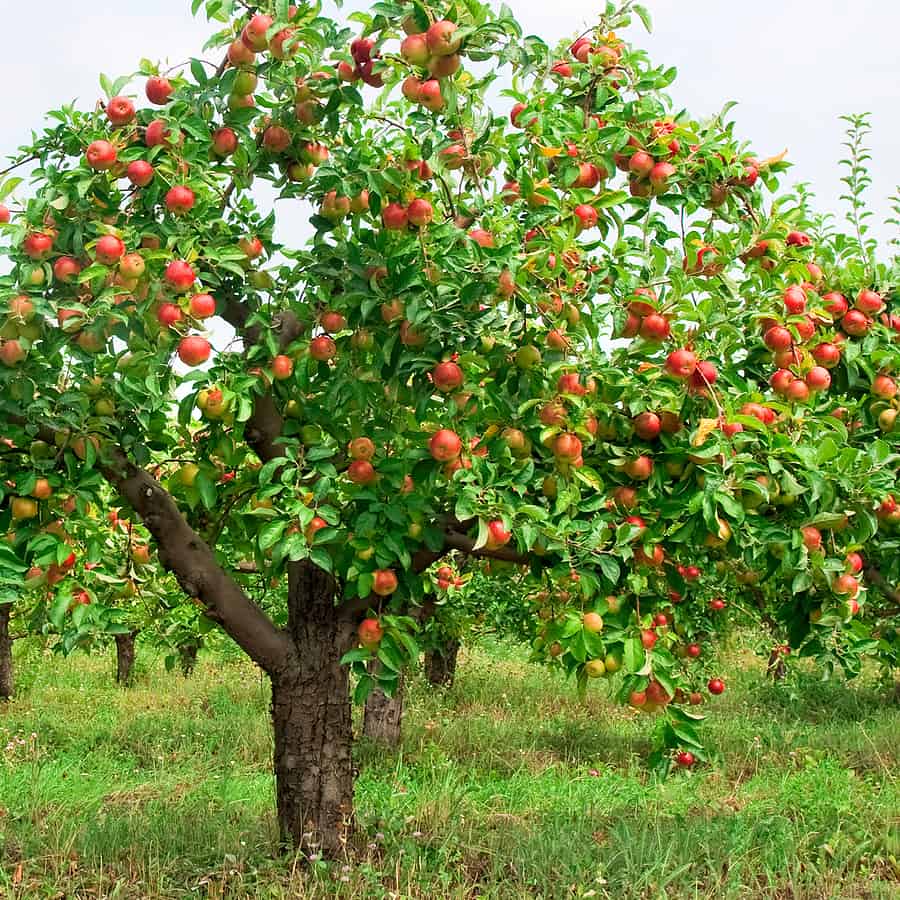
If you’re considering growing apple trees, the first and most crucial step is to choose a suitable variety for your location. Apple trees require specific “chilling hours” during winter to produce fruit. Chilling hours refer to the number of hours below 45°F (7°C) a tree experiences each winter. Choosing the right apple tree is crucial to ensure a successful harvest. Some popular apple tree varieties include Honeycrisp, Gala, Granny Smith, and Pink Lady. Each type has unique characteristics and requirements, so it’s important to research which is best suited for your area.
Honeycrisp apples are known for their sweet, juicy flavour and crisp texture. They require around 1,000 chilling hours and do well in colder climates. On the other hand, gala apples need about 500-600 chilling hours and are known for their mild, sweet flavour. They do well in temperate to moderate climates.
Granny Smith apples have a tart, acidic flavour and require around 1,000 chilling hours. However, they do well in hot climates and are particularly popular in southern regions. Pink Lady apples cross between a Golden Delicious and a Lady Williams apple. They require around 400-500 chilling hours and are known for their sweet-tart flavour and crisp texture.
Once you’ve selected your choice of apple tree, it’s time to start thinking about planting and caring for your tree.
- Thompson and Morgan Potted Mini Fruit Tree Apple Ideal for Small Gardens and Patios Heavy Cropping...
- Brand : Thompson and Morgan
- Product type: PLANT SEED
2. Planting The Apple Tree
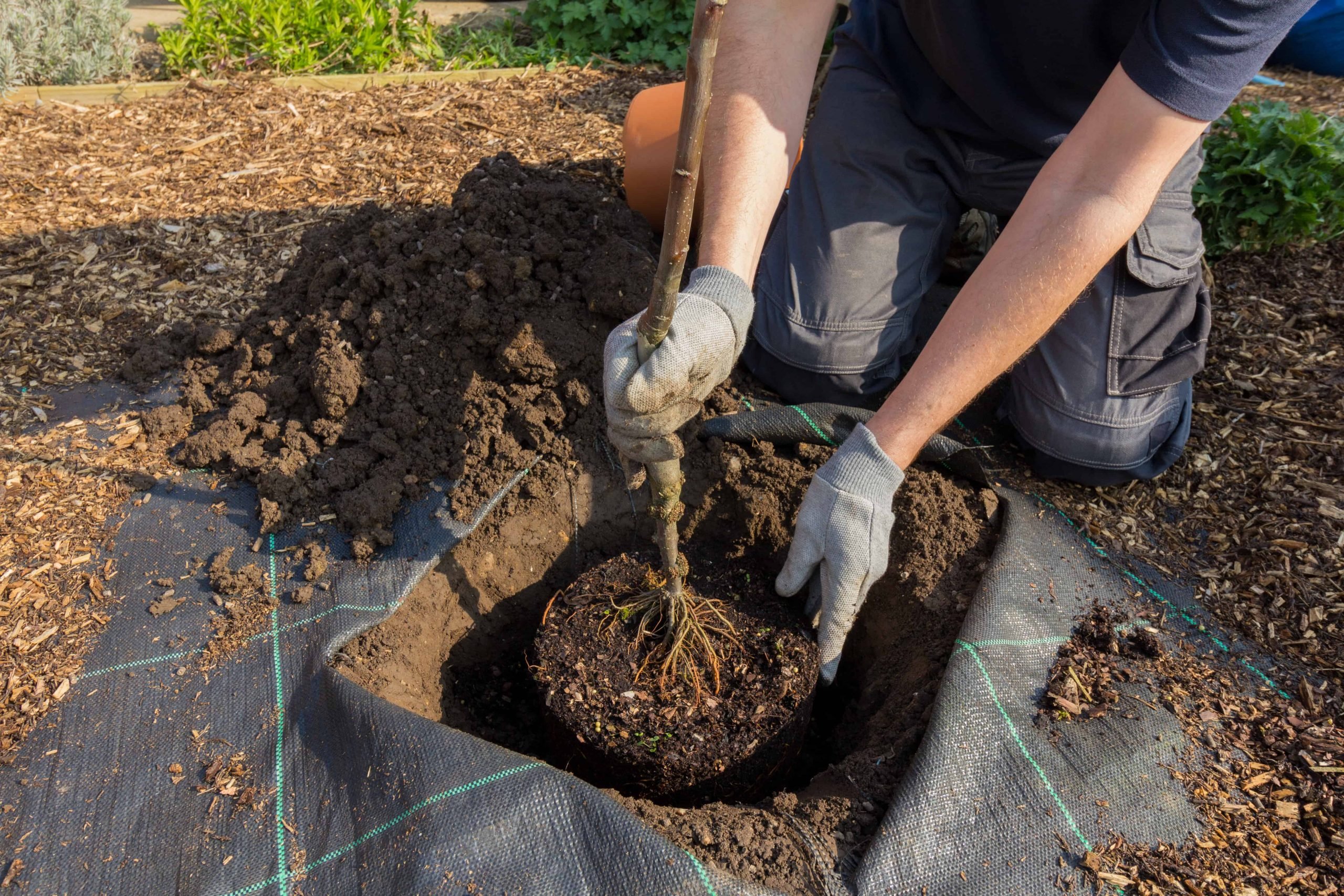
Planting your apple tree is critical in growing and caring for your tree. When planting your tree, choosing a location with plenty of direct sunlight and well-draining soil is essential. First, dig a hole twice as wide and deep as the tree’s root ball. Then, remove any weeds, rocks, or other debris from the area before planting. If your soil is particularly heavy or clay-like, you may want to consider amending it with compost or other organic matter to improve drainage.
Next, gently remove the apple tree from its container, careful not to damage the roots. If the roots are wrapped tightly around the root ball, gently loosen them with your fingers or a small tool. Place the tree in the hole, ensuring the graft union (the bump where the tree was grafted onto its rootstock) is about 2 inches above the soil line. This will ensure that the graft union remains above the soil line as the tree settles into its new home.
Fill the hole with soil, tamping it down gently as you go. Water the tree thoroughly after planting to help settle the soil and provide the moisture it needs to establish itself. It’s also important to note that planting multiple apple trees can improve cross-pollination and increase the likelihood of a successful harvest.
Be sure to plant your apple trees at least 8-10 feet apart to allow for adequate space for growth and proper airflow.
3. Watering The Apple Tree
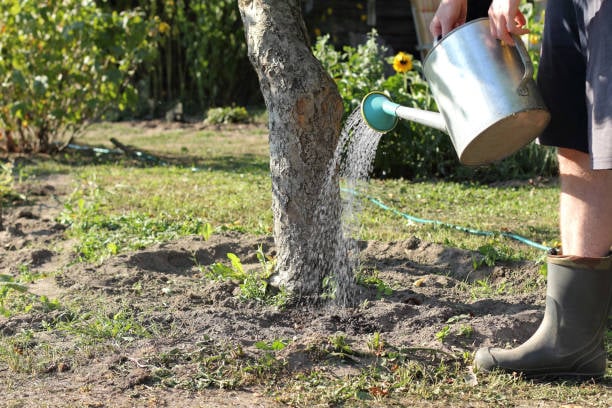
Watering your apple tree deeply once a week is essential during the first year after planting. This will help the tree establish a robust root system and ensure adequate moisture for healthy growth. Then, as the tree matures, you can adjust your watering schedule accordingly. In subsequent years, it’s generally recommended to water your apple tree deeply every 10-14 days during the growing season and adjust for rainfall. This will give your tree the necessary care and moisture to support healthy growth and fruit production.
- 𝟔𝐋 𝐋𝐀𝐑𝐆𝐄 𝐂𝐀𝐏𝐀𝐂𝐈𝐓𝐘: CUQOO watering can indoor Measuring...
- 𝐃𝐔𝐑𝐎𝐁𝐔𝐒𝐓 𝐂𝐎𝐍𝐒𝐓𝐑𝐔𝐂𝐓𝐈𝐎𝐍: Our house plant...
- 𝐌𝐔𝐋𝐓𝐈𝐏𝐔𝐑𝐏𝐎𝐒𝐄 𝐔𝐒𝐄: The water can is designed to fulfill...
Watering the soil around the tree, not just the trunk, is also essential. This will help ensure the water reaches the tree’s root system where needed most. Avoid getting water on the leaves or fruit, as this can promote fungus growth and other diseases.
It’s also important to note that overwatering your apple tree can be as damaging as underwatering. Overwatering can lead to root rot, which can ultimately kill your tree. To avoid overwatering, check the soil moisture level before watering. If the soil is still moist, it may not be necessary to water at that time. Additionally, proper drainage is critical to the health of your apple tree. Ensure the soil around the tree is well-draining, and avoid planting in areas prone to flooding or standing water.
If the soil in your area is heavy or clay-like, you may want to consider amending it with organic matter to improve drainage.
4. Fertilizing The Apple Tree
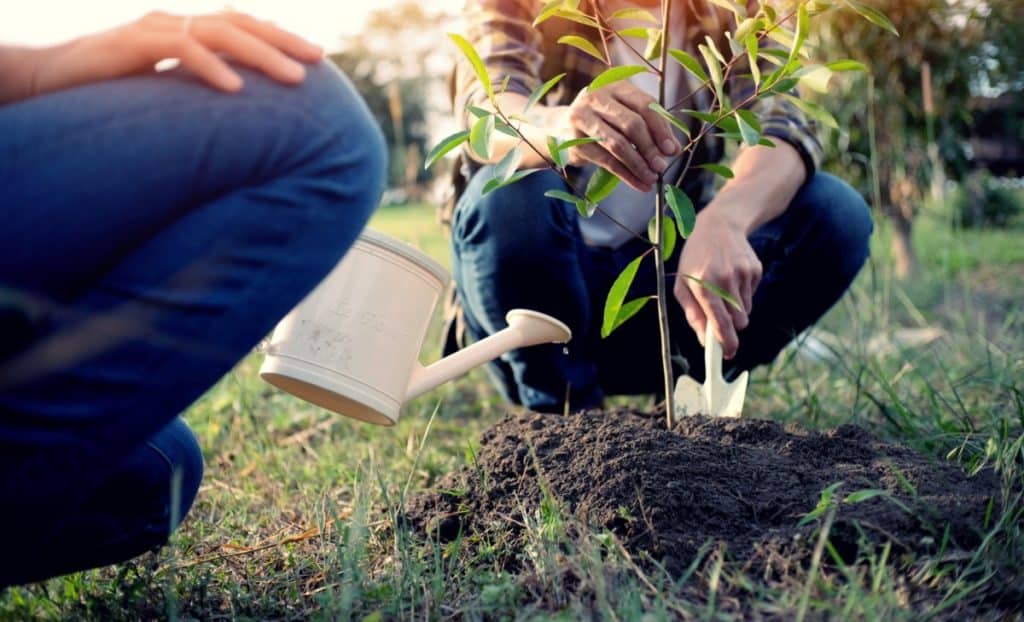
Fertilization is crucial to growing a healthy, productive, well-taken-care apple tree. Proper fertilization can help ensure your tree has the nutrients to grow strong and produce a bountiful harvest. Apple trees typically require fertilization in both spring and fall. A balanced fertilizer, such as a 10-10-10 formula, is essential in the spring. This type of fertilizer contains equal parts nitrogen, phosphorus, and potassium, essential nutrients for plant growth. Generally, you’ll want to apply the fertilizer evenly around the tree, about 6-8 inches from the trunk. Water the fertilizer into the soil thoroughly after using it.
- Grow your very own Mini Orchard from your own back doorstep!
- Collection includes 3 top quality, self-fertile, compact fruit trees so you can grow fruit even in...
- Although compact, they're heavy cropping, with fruits produced from July through to October.
In the fall, you’ll want to apply a slow-release fertilizer. This fertilizer will slowly release nutrients into the soil over time, which can help prepare the tree for winter dormancy. Be sure to choose a fertilizer specifically formulated for fruit trees. It’s important to note that over-fertilizing can harm your apple tree.
Too much fertilizer can burn the tree’s roots and leaves, leading to stunted growth and poor fruit production.
5. Pruning The Apple Tree
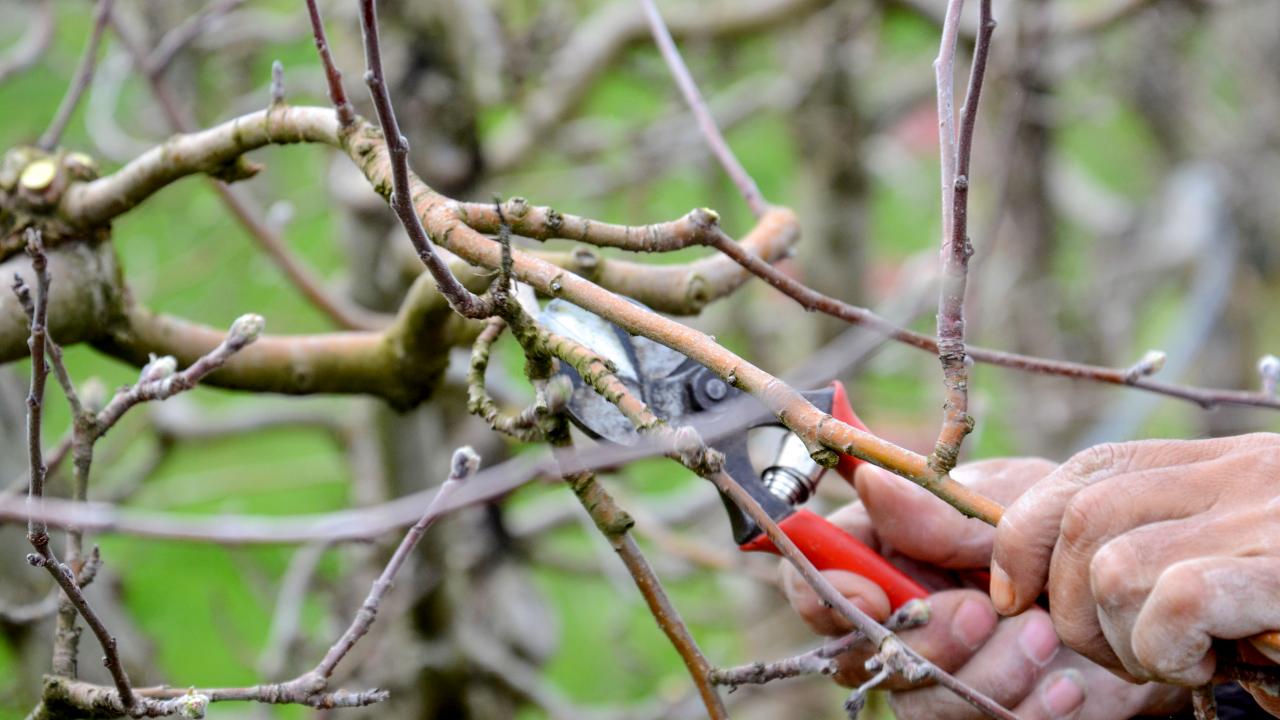
Pruning is an essential step in taking care of your apple tree. Proper pruning helps remove dead or diseased wood, stimulate new growth, and improve the tree’s overall structure. It should be done annually, during the late winter or early spring, before new growth begins. In the first year of your apple tree’s life, it’s essential to focus on shaping the tree and removing damaged or crossing branches. This will help to establish a robust framework for the tree’s future growth. Then, as the tree matures, it’s essential to maintain this framework by pruning regularly.
- Professionally built utilizing stainless steel that meets the highest standards and gives you...
- Polished coating ensures long-lasting sharpness and effortless cuts. Provides anti-rush oxidation...
- Zinc alloy handle with a black paint finish for the grip makes it durable, and easy to hold.
Start by removing any dead or diseased wood. This wood can harbour pests and diseases, which can spread to other parts of the tree. Next, remove any branches that are crossing or rubbing against each other. These branches can create wounds that make the tree susceptible to pests and diseases.
It’s also important to thin out the tree’s interior, allowing air and sunlight to penetrate its centre. This will improve the tree’s overall health and productivity. Remove any branches that are growing toward the centre of the tree or that are excessively crowded. Pruning can seem daunting, especially for novice gardeners. If you’re unsure how to prune your apple tree correctly, consider consulting a professional arborist or horticulturist.
These experts can provide guidance and ensure that your tree is pruned correctly.
6. Harvesting The Apples
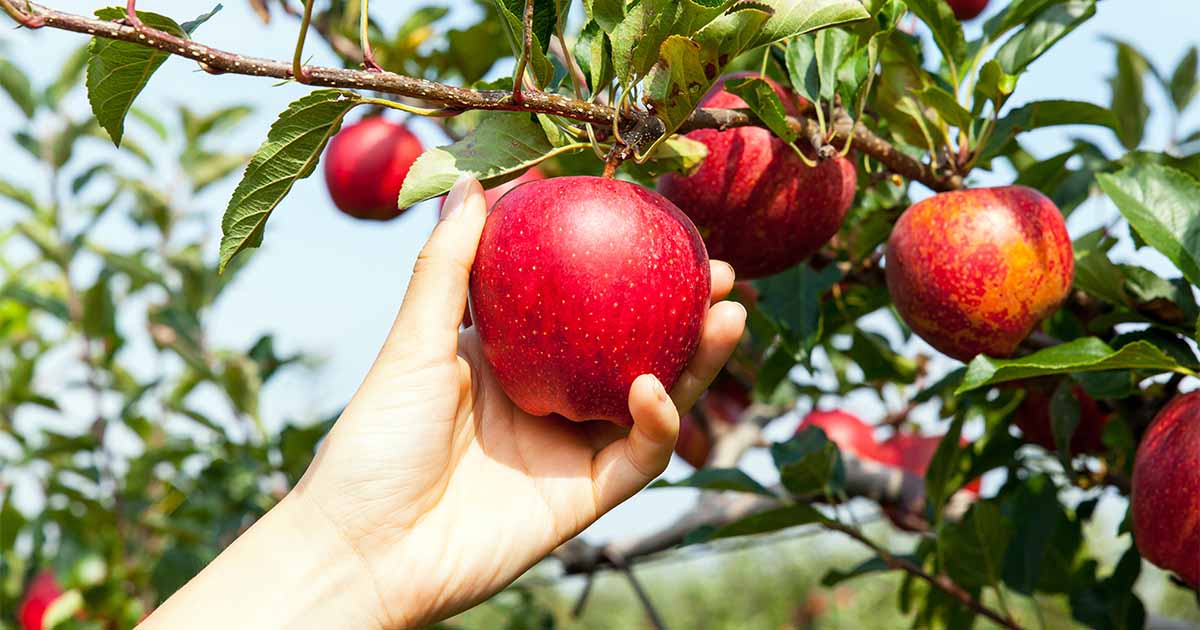
Harvesting apples is an exciting and rewarding experience, but it’s essential to do it at the right time to ensure your fruit is ripe and flavorful. The timing of apple harvest varies depending on the variety, so it’s essential to know when a particular type of apple is ready. Most apple varieties are generally prepared to harvest in late summer or early fall. When harvesting apples, look for fruit that is firm and fully coloured. Different varieties will have different colourations when ripe, so it’s important to know what colour your apples should be when they’re ready to pick. If unsure, tasting is advisable to check their sweetness and flavour.
When picking apples, handling them gently is essential to avoid bruising or damaging the fruit. Gently twist each apple to remove it from the tree, taking care not to pull too hard or to damage the stem or branch. If an apple doesn’t come off quickly, it’s probably not ready to harvest yet, so leave it on the tree for a few more days. Once you’ve harvested your apples, store them properly to keep them fresh and flavorful. Apples should be stored in a cool, dark place, such as a basement or refrigerator, and kept away from other fruits and vegetables that may give off ethylene gas, which can cause the apples to spoil more quickly.
With proper care and storage, your apples should stay fresh for several weeks or even months, allowing you to enjoy the fruits of your labour long after the harvest season.
Apple Tree: Cultivating Sweet Success
Growing apple trees can be a fulfilling and satisfying experience for any gardener or farmer. But, as you have learned in this guide, there are many important factors to consider when cultivating apple trees, from selecting the suitable variety for your specific climate and soil conditions to providing proper care and maintenance throughout the year.
One key factor is the importance of regular pruning and thinning of your apple trees. This helps promote healthy growth and development and ensures trees produce a more abundant and higher-quality harvest. Another critical aspect of apple tree care is providing adequate water and nutrients. This means ensuring that your trees receive regular watering, especially during periods of drought or high heat, and fertilization with the proper nutrients at the appropriate times throughout the year.
Caring for an apple tree requires patience, attention to detail, and dedication. However, the rewards can be significant, with the potential for a bountiful harvest of delicious, homegrown apples that you and your family can enjoy for many years.









